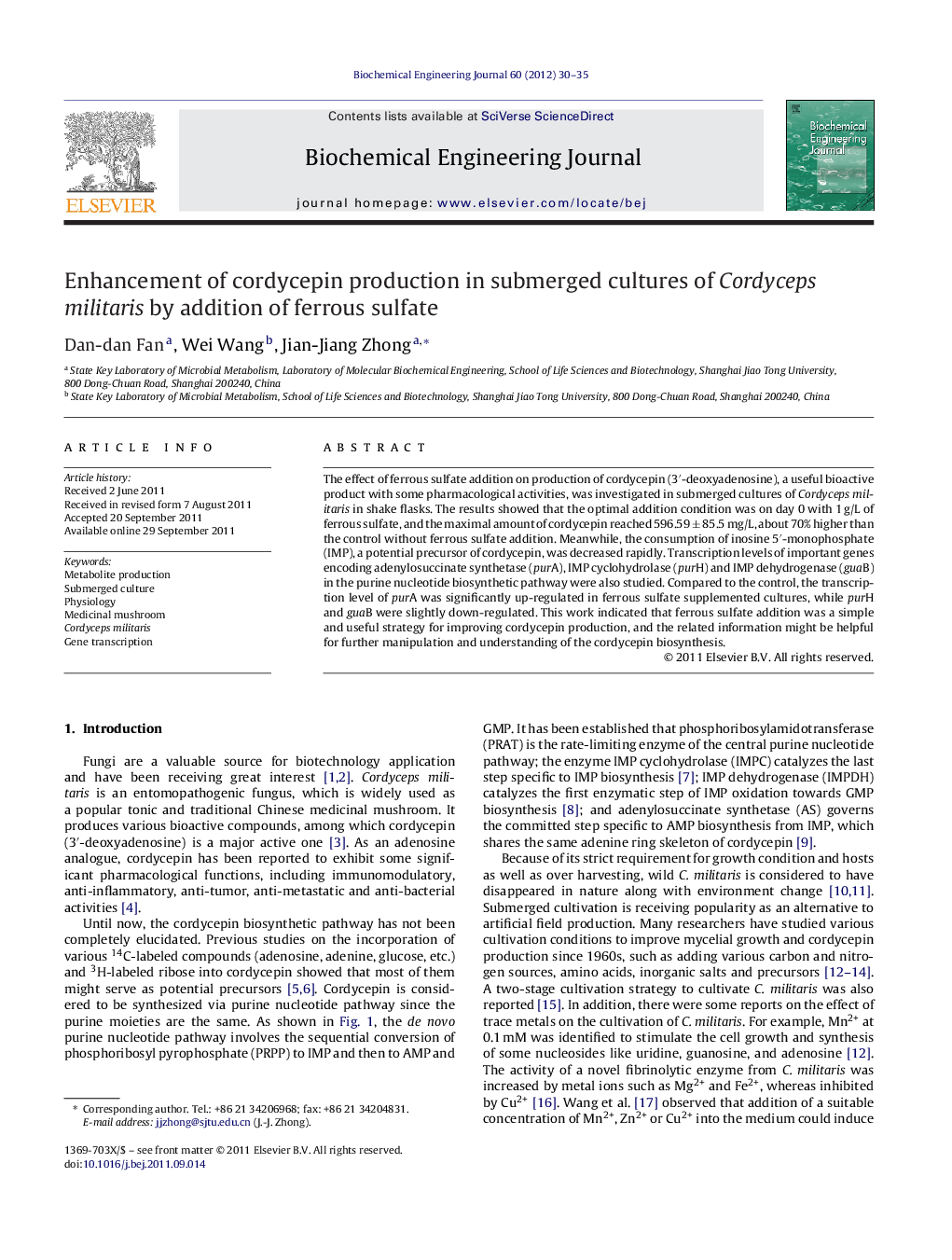| Article ID | Journal | Published Year | Pages | File Type |
|---|---|---|---|---|
| 3657 | Biochemical Engineering Journal | 2012 | 6 Pages |
The effect of ferrous sulfate addition on production of cordycepin (3′-deoxyadenosine), a useful bioactive product with some pharmacological activities, was investigated in submerged cultures of Cordyceps militaris in shake flasks. The results showed that the optimal addition condition was on day 0 with 1 g/L of ferrous sulfate, and the maximal amount of cordycepin reached 596.59 ± 85.5 mg/L, about 70% higher than the control without ferrous sulfate addition. Meanwhile, the consumption of inosine 5′-monophosphate (IMP), a potential precursor of cordycepin, was decreased rapidly. Transcription levels of important genes encoding adenylosuccinate synthetase (purA), IMP cyclohydrolase (purH) and IMP dehydrogenase (guaB) in the purine nucleotide biosynthetic pathway were also studied. Compared to the control, the transcription level of purA was significantly up-regulated in ferrous sulfate supplemented cultures, while purH and guaB were slightly down-regulated. This work indicated that ferrous sulfate addition was a simple and useful strategy for improving cordycepin production, and the related information might be helpful for further manipulation and understanding of the cordycepin biosynthesis.
► Ferrous sulfate addition was found useful to enhance the cordycepin production. ► The related gene expression was studied for better manipulation of the cordycepin biosynthesis. ► The relationship between IMP content and cordycepin production was studied. ► purA gene expression was found important in cordycepin synthesis.
